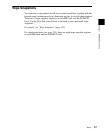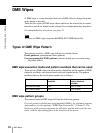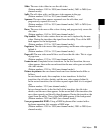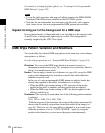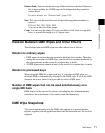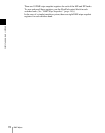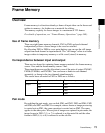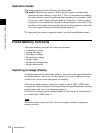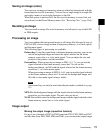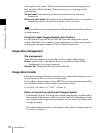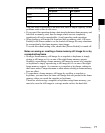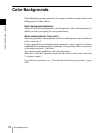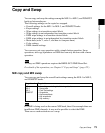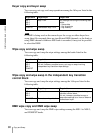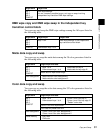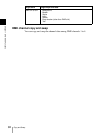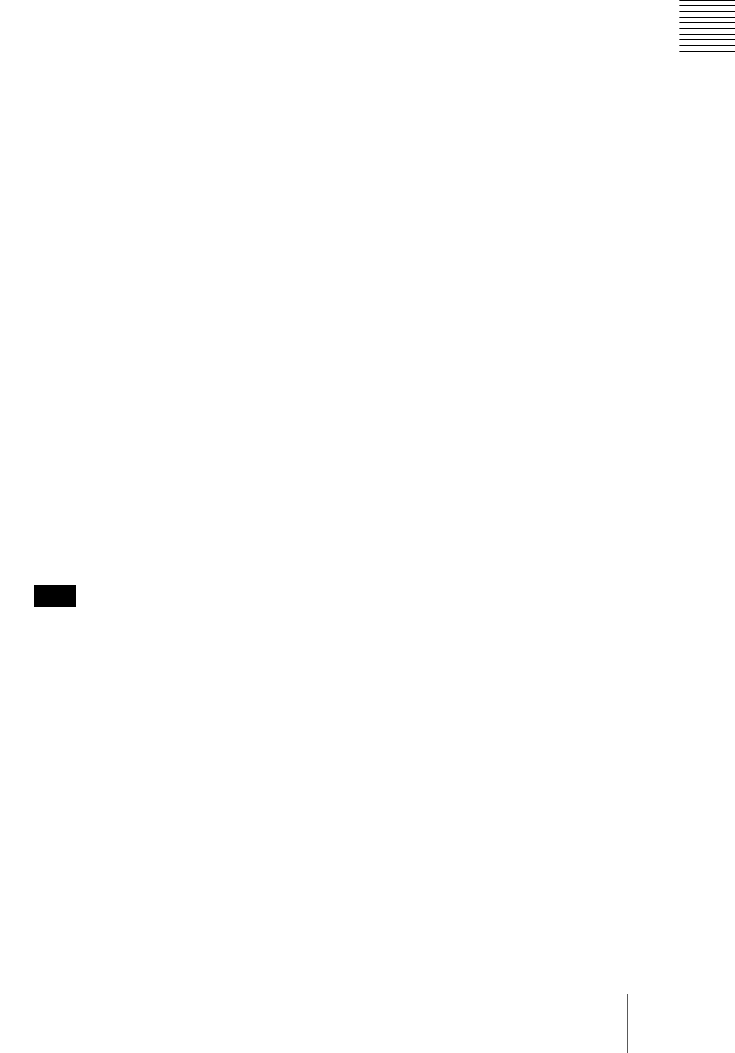
75Frame Memory
Chapter 1 DVS-9000 Functions
Saving an image (store)
You can save an image in temporary memory which has been placed with the
freeze function as a file in memory. You can save a single image in a single file
and apply a name of up to eight characters to the file.
When the system is powered off, the file saved in memory is erased, but you
can restore it in the Frame Memory menu. (See “Restoring Files” (page 364).)
Recalling an image
You can recall an image file saved in memory, and allocate to any of the FM1
to FM8 outputs.
Processing an image
You can combine the background image (a still image file allocated to any of
FM1 to FM8, a freeze image written to temporary memory, or a black signal)
and the input signal.
The following types of processing are available.
Pattern key: Using the signal from a dedicated pattern generator, you can cut
out the background image and insert the signal selected on the frame
memory source bus or a color matte signal. You can adjust the size and
position of the pattern, and add modifiers.
External key: When processing an image in FM1 (3, 5, 7), you can use the
signal selected on the frame memory source bus 2 to cut out the
background image, and fill with the signal selected on the frame memory
source bus 1, or a color matte signal.
When processing an image in FM2 (4, 6, 8), you can use the signal selected
on the frame memory source bus 2 to cut out the background image, and
fill with a color matte signal (always white).
Note
An external key can only be used when the pair mode is enabled (see page
73).
MIX: Mix the background image with the signal selected on the frame memory
source bus or color matte signal. The mix ratio can be set.
NAM: Non-additive mix the background image with the signal selected on the
frame memory source bus or color matte signal.
Image output
Moving the output image (reposition function)
For up to two channels of FM1 to FM8 (one from FM1, FM3, FM5 and FM7
and the other from FM2, FM4, FM6 and FM8), you can move the output image



